300 Years of the Viennese Porcelain Manufactory Augarten
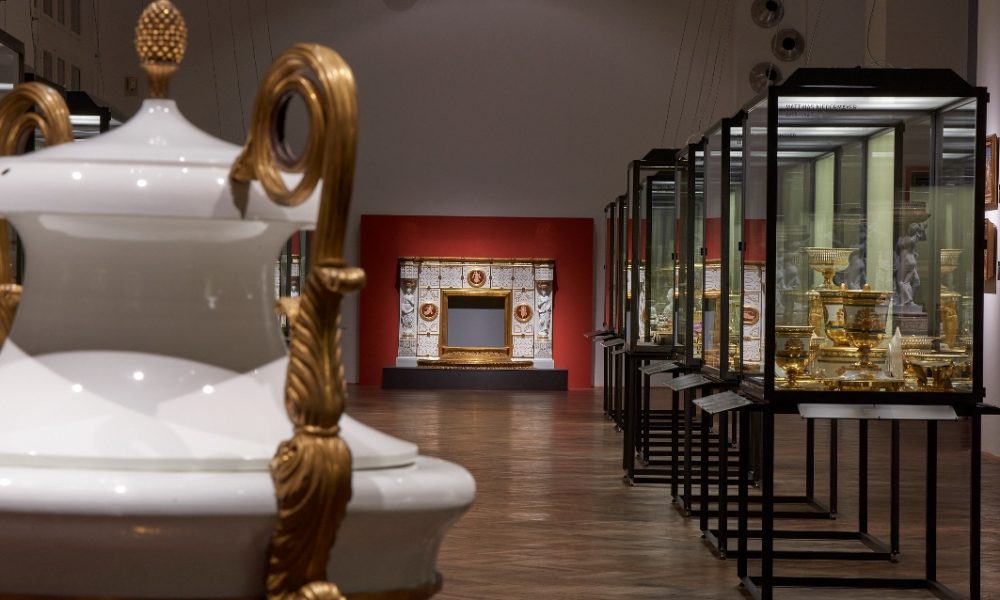
Art & tradition – Augarten Porcelain
The Viennese Porcelain Manufactory Augarten is the second oldest porcelain manufactory in Europe and in 2018 celebrates its foundation 300 years ago. On this occasion, the Porcelain Museum in the Augarten is showing a special exhibition (until 13th October, 2018) and also the MAK (Austrian Museum of Applied Arts / Contemporary Art) presents an exhibition dedicated to this anniversary (until 23rd September 2018).
EWIG.SCHÖN (eternally beautiful) – 300 years of Viennese porcelain
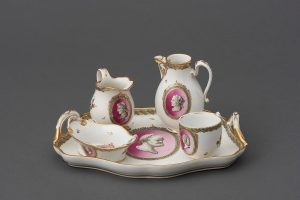
Solitär-Service of the imperial court of Maria Theresia, Vienna, around 1778, ©MAK, Georg Mayer
In the anniversary exhibition “Ewig schön”, the Porcelain Museum in Augarten brings together designers and users. The exhibits of the different epochs are always presented in their respective cultural environment and thus show the prevailing moods of that time. Beginning with surprising marvels of the baroque over cheerful objects of the rococo to the shiny golden splendour of classicism, visitors can embark on a journey through time. In the Biedermeier period, simplicity is in the foreground, in Art Déco particularly fine creations appear and the colourfulness of the 50s leads to the design of today. For this exhibition, the holdings and numerous new acquisitions of the Porcelain Museum in Augarten were supplemented by special loans from various Austrian and international private collections.
Permanent exhibition at the Porcelain Museum in Augarten
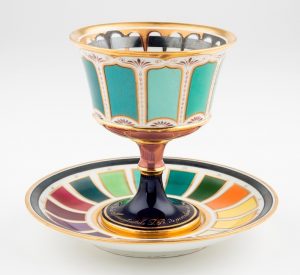
Goblet with Presentoir, Vienna around 1816, ©MAK, Katrin Wißkirchen
The museum is located in a side wing of the manufactory. Above its two exhibition levels a historic kiln rises.
The upper floor shows the origin of porcelain in China until the founding of the first Viennese manufactory under Claudius Innocentius du Paquier in 1718, which was granted the sole right by Emperor Karl VI to produce porcelain for the Austrian Crown lands. At that time, the manufactory was located in Porzellangasse in the 9th district.
The main components of porcelain are clay, feldspar and quartz. These can be felt in the exhibition and of course the different production steps are also explained.
The ground floor, the actual company museum, is dedicated to the 20th and 21st century.
History of the Porcelain Manufactory Augarten
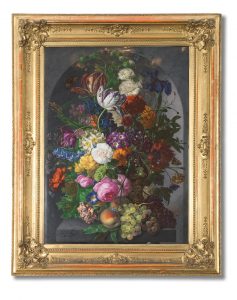
Porcelain picture, flower vase still life, Vienna 1818, porcelain painter Joseph Nigg, ©MAK, Georg Mayer
In the time of Maria Theresa, 1744, the manufactory came into imperial possession. Since then, each piece has been marked with the blue binding shield of the Babenberg coat of arms.
The manufactory gained fame far beyond Austria under director Conrad Sörgel von Sorgenthal (1780-1830), a time in which straightforward forms of classicism were fashionable. It was also Conrad von Sorgenthal who sent his employees out as “lifestyle scouts” to find out what the buyers’ preferences, fashions and opinions were before designing suitable products.
After an economic depression of the manufactory triggered by the French Wars, the Congress of Vienna brought an upturn again at the beginning of the 19th century. Porcelain from Vienna was a prestigious gift with which one could make an impression.
1864 was a dark year for porcelain from Vienna. Due to too much cheap competition the manufactory had big financial problems and had to be closed down. The extensive collection of master designs was handed over to today’s Austrian Museum of Applied Arts (MAK).
Special exhibition at MAK – 300 years of the Viennese Porcelain Manufactory
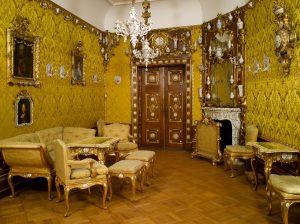
Dubsky-Room, around 1740, MAK-collection Baroque Rococo, Classicism,© Joe Coscia, Jr
Many examples from this estate are therefore shown at the MAK in the anniversary exhibition: crockery, vases, clocks and sculptures, as well as porcelain pictures with relief gold decoration and cobalt blue or floral still lifes. In addition, the main works such as the porcelain room from the Brno Palais Dubsky or the centrepiece from Zwettl Abbey are exhibited.
Viennese Porcelain Manufactory Augarten – reopening
In 1923, during the Art Déco period, the manufactory in Palais Augarten was reopened. Cooperation with contemporary artists, open to modern trends, was intensified and continues to this day.
Opening hours Porcelain Museum & MAK
Porcelain Museum & sale in the palais: Mon- Sat, 10am to 6pm
Admission: € 7/person
MAK: Tue 10am to 10pm, Wed-Sun 10am to 6pm
Admission: € 12 / person
The Hotel Stefanie – the oldest hotel in Vienna – is just 15 minutes walking distance away, as is the Hotel City Central or the Hotel Capricorno. The subway station closest to the Porcelain Museum is the U2 – Taborstraße.
Main Picture: MAK-exhibition hall,© MAK, Georg Mayer










